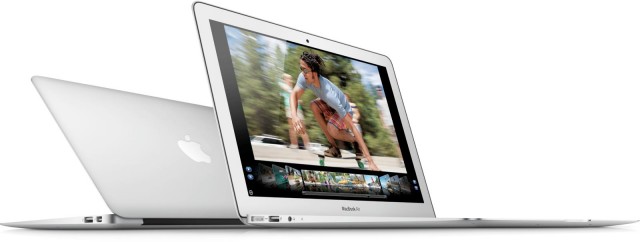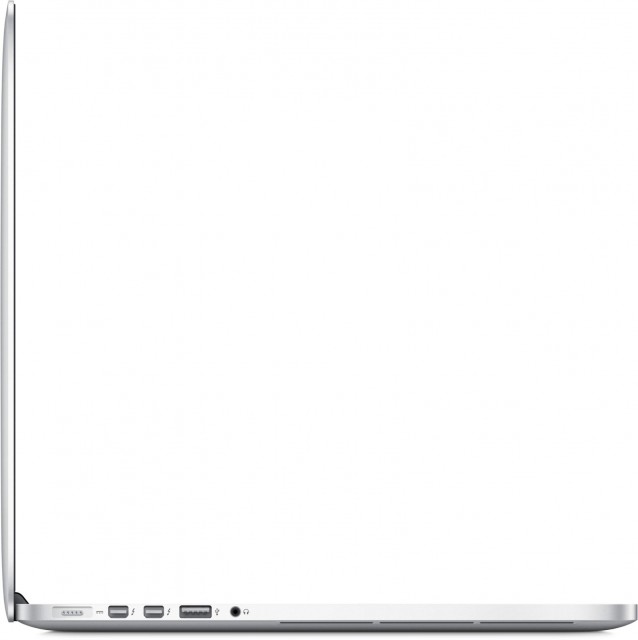Apple, of course, rolled out new Mac laptops yesterday. The most desirable of these – new MacBook Pro laptops with ultra-high-resolution Retina Displays – will require a significant budget, with pricing beginning at US$2199. And it could be worth it for those who can afford them: while Apple has quietly eliminated its 17″ machines, the high-density displays should nonetheless make the 15″ real estate ideal for fitting pro app UIs on the go.
But the most important thing to say about Apple’s machines from a music standpoint is that the forward advancement of I/O has made almost any of these models a good choice. Let’s take a look at the “low-end” machine, the MacBook Air. It’s still the most portable and most affordable of the lineup. But so long as you don’t need to make use of the GPU or do really heavy CPU-based rendering, it has more than enough horsepower to handle audio applications. The Air is also standardized on 4 GB of RAM, though I think it’s worth maxing it out at 8 GB if it’s your primary machine.
The new Air comes with two USB 3 (USB 3, not USB 2) ports, along with Thunderbolt. Thunderbolt, in turn, will break out to FireWire as needed. And even that’s a bit of overkill. Most audio hardware and fast hard disks still run just fine on FireWire 800 and USB 2, maximizing the speeds those buses provide. There’s a reason, for instance, the MOTU interface we covered last week sticks to USB 2, like many of its rivals: it doesn’t really need the added bandwidth. But for Air users, this all means a chance to grow: via Thunderbolt, you can connect high-resolution displays and audio with loads of I/O. Universal Audio will be one of the first vendors to make use of that, and an Air with their Apollo DSP and audio I/O platform could be an ideal combination. See our previous coverage:
Apollo: UA Adds Low-Latency Effects in Audio Interface, Proves FireWire, Thunderbolt are Cool
At the January NAMM trade show, Apogee was also teasing their Thunderbolt plans; you can expect the likes of MOTU and others to follow suit soon.
My advice is this: there’s no reason to hold off buying an audio interface or hard drive. USB2 and FireWire800 are just fine for these. But there’s also every reason to make sure any computer you buy supports at least Thunderbolt, and optimally, has a dedicated USB3 port, too. I expect some interesting applications on the Thunderbolt side, definitely, and for Mac-centric products, the fact that it was deployed first means that even the Apple machines with Thunderbolt and USB2 should support a lot of intriguing accessories in coming years.
Whereas their tendency has sometimes been to reduce the number of ports on laptop revisions, Apple is being pretty generous with I/O on the MacBook line in general. The upgraded “conventional” MacBook Pro (the one minus the Retina Display) includes two USB 3 ports, one FireWire 800 port, and one Thunderbolt port. The Retina Display models include two Thunderbolt ports and two USB 3 ports. I can’t recommend the US$1199 MacBook Pro over the similarly-configured MacBook Air; I think most people would prefer the Air’s higher screen resolution and lighter weight and enhanced portability. But the MacBook Pro with the conventional display remains a decent middle-ground, and you’re likely to find those machines even cheaper in used, refurb, and open box deals.
Thunderbolt is available across Apple’s whole product line, too, minus the Mac Pro (thanks to a reader for that catch), though not yet USB 3. So even a Mac mini could be a nice, future-proof purchase – an extra rendering node that can be a capable studio machine, for instance.
The reason I focus on I/O is, a lot of the quality of the audio production experience today is dependent on that external hardware. It’s an audio interface you love that has the ins and outs you need to connect gear you want to record. It’s the fast, large external hard drive for recording multichannel audio. It’s the big display for viewing your whole edit session at once.
If you do a lot of rendering (high track counts with lots of soft synths or effects, or mixing in video production and the like), CPU differentiation will matter. The Air is at the low end of the scale here, though still with decent CPUs onboard. The iMac, oddly enough, becomes the best bargain: quad CPUs combined with a great display makes the all-in-one Apple’s best bang-for-your-buck, provided it doesn’t have to move. And the Retina Display models, in turn, have something to recommend them other than just the looks of the screen: they have some seriously-powerful CPU iron in there.
Otherwise, though, you can basically choose the form factor and price you want and go from there.
See the comparison chart at Apple:
http://www.apple.com/why-mac/compare/
What about the PC? As far as I’m concerned, if you like Mac OS, it’s pretty easy to justify an Apple machine – especially with the mini and Air under a grand. If you don’t like Mac OS, by the same token, if you prefer booting Windows or Linux or spend most of your time in that software, you’re probably going to consider a PC. PCs still have an edge for those who prefer maximizing their dollar in a tower form factor, and there are some decent-looking laptops that cost less than the Air – particularly if it’s important to you to get a GPU. This is just an aside, though; I can’t keep up with the complexities of the PC market well enough to recommend a particular model; I’d have to become a full-time PC laptop reviewer. And, of course, I think that’s a big part of why so many people choose Apple. This isn’t a PC review, though, so consider this only a footnote.

